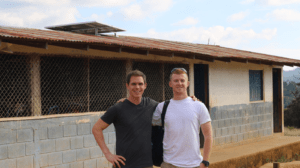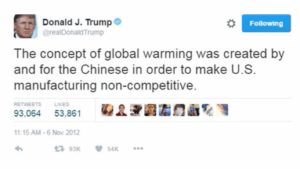
Steven Thomsen, co-founder and vice president of United Solar Initiative, discussed USI’s vision for using solar energy to provide clean water to various countries throughout Africa. USI’s recent partnership with World Vision, an international non-profit organization, has given USI this unique opportunity.
United Solar Initiative: What is your vision for United Solar Initiative, in terms of how solar energy can help others?
Steven Thomsen: Our vision at USI is to see the solar industry united in leveraging their collective resources to help bring power to people living without access to electricity. This electricity in turn can be used to pump water for communities that do not currently have a clean water source. The electricity can also provide much needed lighting to schools and hospitals in under-resourced communities throughout the world.
USI: When people in developing countries finally receive access to energy and power, what kind of physical impact does that have on them?
Thomsen: So, in terms of physical effects, if students don’t have access to solar power, they’re forced to study by the light of either a kerosene lantern or a candle, which means they’re breathing in the fumes from both of those for hours every night. That has a huge physical impact on them. Another thing is that lanterns and candles can cause a lot of burns if they get knocked over. We’ve even heard of instances where people’s houses will catch on fire from a lantern that gets knocked over. Any time you have an open flame it can be a safety hazard.
In terms of water, having a clean source in a safe location can have a huge impact, because the alternative is having to go and fetch water from somewhere else. Sometimes that has to be done at night, when it’s not safe to be out. You have to go down into a ravine to get to a river, which can be dangerous. Then you have to come back up with really heavy water, oftentimes 40 pounds of water.
I went to Ethiopia in May, and one of the ladies actually took us to this village to see where the women used to collect water, and they had to go up this really narrow rock face, probably 30 or 40 feet up. She said that several women had died in the past few years, because when women would go and get their water they would slip and fall and die. Additionally, in this little village, when you get down to the ravine to get the water, you have to go into a cave to get it. One day, the cave collapsed and trapped somebody and they died as well. It’s just risky having to get water from places like that.
USI: Is there already a well in this village for people to fetch water from?
Thomsen: It’s something that will be installed through World Vision. Instead of going to fetch water from far away, you can go nearby to a water point that’s on nice, level ground in a safe, central place in the community.
USI: Are there any other experiences you’ve had abroad with people from different communities that demonstrates what USI and World Vision are trying to accomplish?
Thomsen: I think one of the coolest things that happened to me in the conference from back in May was that the traditional hand pumps that are kind of ubiquitous across Africa, that most people think about where they see the kids pumping water … World Vision has traditionally installed them. But they’ve realized that in order to provide clean water on a greater scale they need a mechanized pump. So, they’ve done pumps powered by diesel generators and they’ve done pumps powered by the national power grid, but neither of those sources are very reliable. So, World Vision, one of the biggest non-profit providers of clean water in the world, kind of sees solar as the future for powering these large-scale water pumps, so it’s really exciting to be a part of USI and be on the forefront of that at a time when the global water crisis is really coming to a head. I think we as an organization are uniquely positioned to be a major player in the fight to end water scarcity.
Article: Lydia Odom



